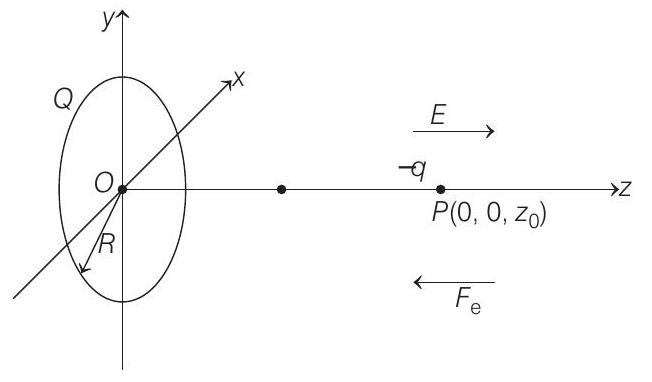Electrostatics 7 Question 22
24. A positively charged thin metal ring of radius
(a) periodic for all values of
(b) simple harmonic for all values of
(c) approximately simple harmonic provided
(d) such that
Show Answer
Answer:
Correct Answer: 24. (a,c)
Solution:
- Let

Force on charge at
Similarly, when it crosses the origin, the force is again towards centre
Thus, the motion of the particle is periodic for all values of
Secondly, if
i.e. the restoring force






